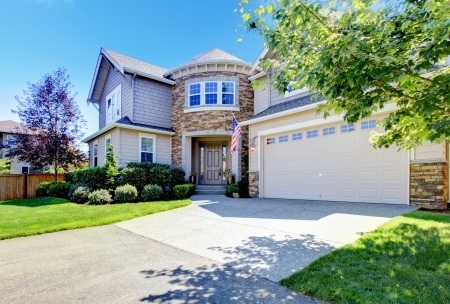NAHB: Builder Sentiment Surges in August
 Home builder confidence in housing market conditions surged in August after sagging to an eight-month low in July. The National Association of Home Builders reported a July reading of 68 in August after analysts expected a one- point increase from July’s Housing Market Index reading of 64. Any reading over 50 indicates that more builders consider housing market conditions positive than those who do not.
Home builder confidence in housing market conditions surged in August after sagging to an eight-month low in July. The National Association of Home Builders reported a July reading of 68 in August after analysts expected a one- point increase from July’s Housing Market Index reading of 64. Any reading over 50 indicates that more builders consider housing market conditions positive than those who do not.
Component readings of the Housing Market Index also improved in August. Builder confidence in current housing market condition rose four points to 74; Builder confidence in housing market conditions over the next six months rose by five points to 78. Builder confidence in buyer traffic in new home developments rose one point to an index reading of 49.
Positive Economy Fuels Builder Confidence
Builders have long cited a shortage of buildable lots and labor, along with rising costs as impacting confidence in current and future confidence in housing markets. NAHB said that labor shortages are worse in 2017 than in 2016. Builders reported labor shortages including carpenters and electricians. August readings suggest that positive economic developments are mitigating long-term builder concerns, but a recent tariff on Canadian lumber raised materials costs for some builders.
The discrepancy between builder confidence and housing starts concerns real estate pros and housing and lending industry leaders, but without enough workers to staff their building crews, home builders face obstacles in meeting buyer demand for homes.
Stronger economic and jobs indicators are boosting builder confidence in housing market conditions. As more prospective home buyers find stable jobs, buying a home becomes possible for prospective buyers who have waited for economic conditions to improve sufficiently to invest in home ownership.

 According to the National Association of Home Builders, July builder sentiment dipped to an index reading of 64 as compared to June’s revised reading of 66, the original reading was 67. Analysts expected the reading for July to increase to 68. Builders cited increasing lumber prices as a concern affecting builders’ outlook on housing market conditions for new single-family homes. Any reading over 50 for the NAHB Housing Market Index indicates that more builders than fewer are positive about housing market conditions, but July’s reading was the lowest in eight months. NAHB said that home builder confidence in market condition “remains strong.”
According to the National Association of Home Builders, July builder sentiment dipped to an index reading of 64 as compared to June’s revised reading of 66, the original reading was 67. Analysts expected the reading for July to increase to 68. Builders cited increasing lumber prices as a concern affecting builders’ outlook on housing market conditions for new single-family homes. Any reading over 50 for the NAHB Housing Market Index indicates that more builders than fewer are positive about housing market conditions, but July’s reading was the lowest in eight months. NAHB said that home builder confidence in market condition “remains strong.” Case-Shiller’s National Home Price Index indicated slower home price growth in April. Year-over-year, home prices rose 5.50 percent in April as compared to 5.60 percent in March. Year-over-year readings are calculated on a seasonally-adjusted annual basis.
Case-Shiller’s National Home Price Index indicated slower home price growth in April. Year-over-year, home prices rose 5.50 percent in April as compared to 5.60 percent in March. Year-over-year readings are calculated on a seasonally-adjusted annual basis.